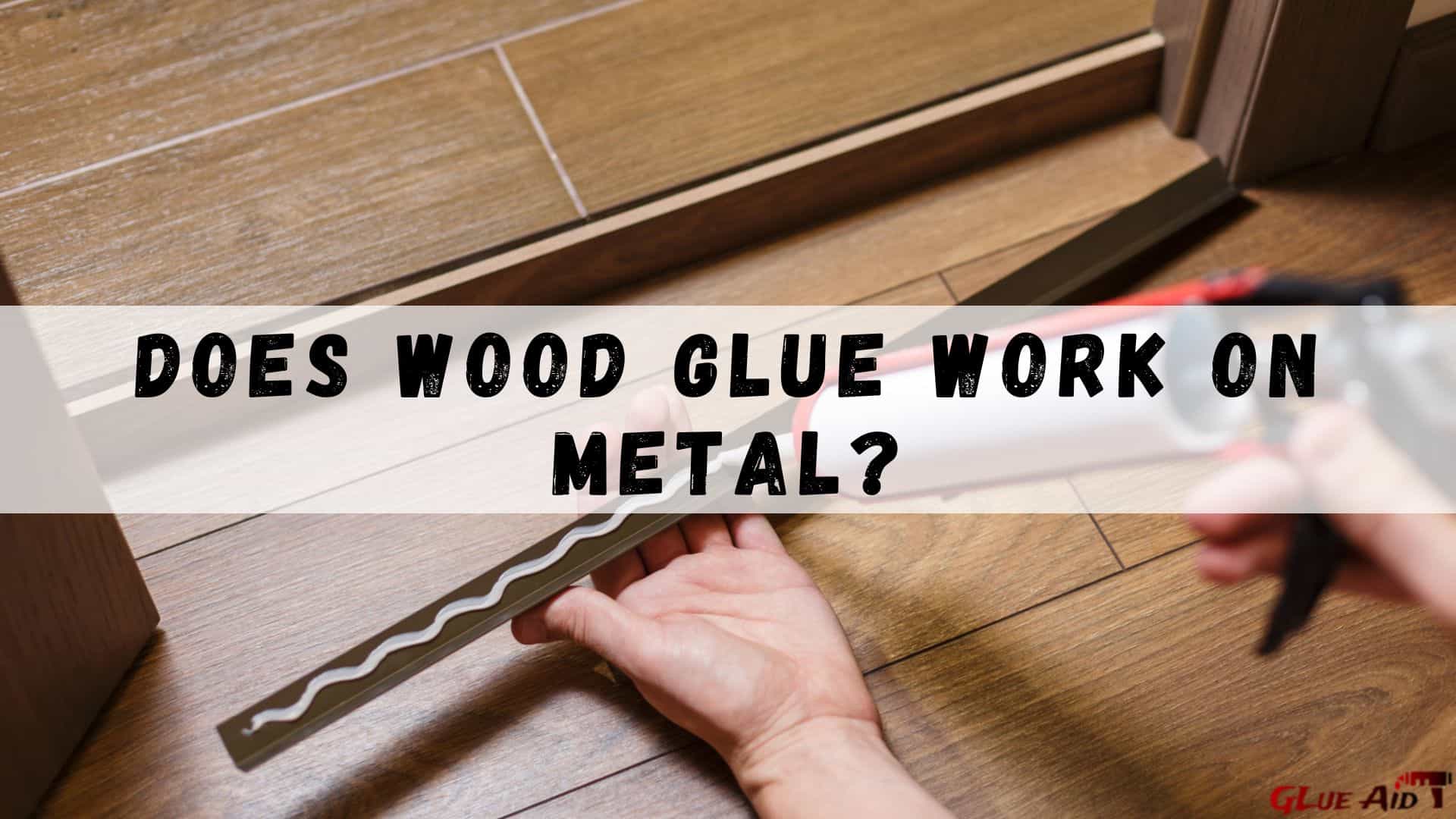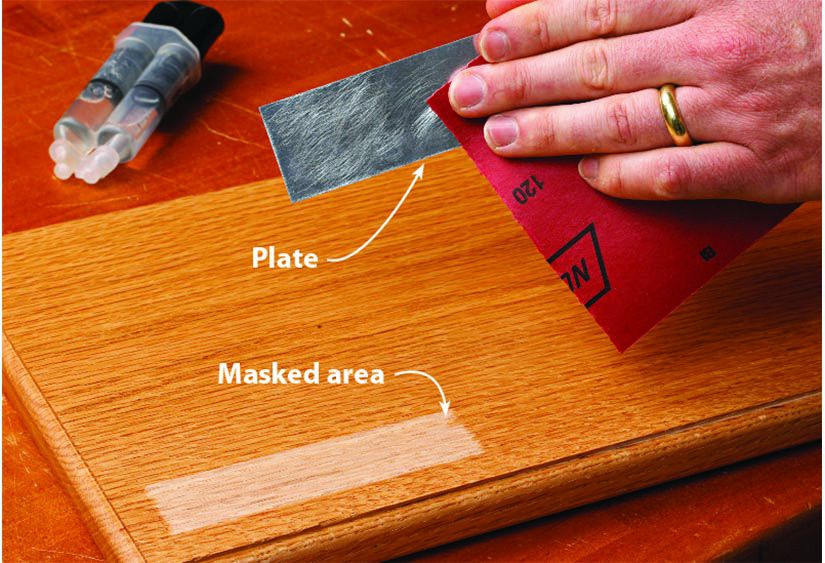Can you use wood glue on metal? It’s a common question for DIY enthusiasts and crafters. Well, let’s find out! Wood glue is typically used to bond wood pieces together, but can it work on metal too? In this article, we’ll explore whether wood glue is suitable for metal projects and discuss alternative adhesive options for joining metal surfaces. So if you’re curious about woodworking and metalworking, keep reading to discover the answers!
Now, you might be wondering why someone would even consider using wood glue on metal. After all, wood and metal are two very different materials with distinct properties. However, there may be situations where you need a quick fix or a temporary solution. Perhaps you’re working on a small art project or a DIY home improvement task and don’t have any metal-specific adhesive on hand. In cases like these, you might be tempted to experiment with wood glue. But does it actually work? Stay tuned to find out whether wood glue can bond metal effectively.
Before we dive into the details, it’s essential to understand the characteristics of wood glue and how it differs from other adhesives. Wood glue, also known as carpenter’s glue or PVA glue, is designed to create strong bonds in woodworking projects. It dries clear, can be sanded or painted over, and forms a reliable connection between wood surfaces. However, wood glue isn’t specifically formulated for metal, which raises doubts about its effectiveness. So, let’s explore the compatibility of wood glue with metal and explore better alternatives for bonding metal objects.

Can You Use Wood Glue on Metal?
Wood glue is a common adhesive used in woodworking projects to bond wood pieces together. However, you may be wondering if you can also use wood glue on metal. This article will explore whether wood glue is suitable for bonding metal surfaces, the potential challenges and limitations, and alternative adhesives that are specifically designed for metal bonding.
1. Can Wood Glue Bond Metal Surfaces?
Wood glue is primarily designed to bond wood fibers together through a chemical reaction that results in a strong bond. While it can provide a strong hold on porous materials like wood, it is not recommended for bonding metal surfaces. Metal surfaces are non-porous and do not provide the necessary surface for the wood glue to penetrate and create a strong bond.
Additionally, wood glue is not designed to withstand the unique challenges and stresses that metals can experience, such as temperature changes, moisture exposure, and vibrations. These factors can weaken the bond over time, leading to failure and separation of the glued metal parts.
When it comes to bonding metal surfaces, it is best to use adhesives that are specifically formulated for metal bonding, such as epoxy or metal adhesives.
2. Challenges of Using Wood Glue on Metal
If you still choose to use wood glue on metal despite its limitations, you may encounter several challenges. Firstly, the wood glue will not adhere well to the metal surface, resulting in a weak bond that can easily break. The lack of penetration into the metal pores will prevent the glue from creating a strong hold.
In addition, wood glue is not resistant to moisture, which can be problematic when bonding metal surfaces that may be exposed to humidity or water. The moisture can weaken the bond and cause the wood glue to deteriorate over time, leading to the failure of the bond.
Furthermore, the expansion and contraction of metal due to temperature changes can cause the wood glue to crack and separate from the metal surface. Metals have a higher coefficient of thermal expansion compared to wood, making wood glue unsuitable for accommodating these changes.
3. Alternatives for Bonding Metal Surfaces
If you need to bond metal surfaces, there are several adhesive options specifically designed for metal bonding. Epoxy adhesives, for example, are known for their exceptional bonding strength and resistance to temperature changes and moisture. They can create a durable bond that can withstand the unique challenges that metals often face.
Another option is metal adhesives, which are formulated to bond metal surfaces effectively. These adhesives often come in two parts that need to be mixed together before application. They can provide a strong and reliable bond, even in demanding conditions.
When choosing an alternative adhesive for metal bonding, it is essential to consider the specific properties and requirements of your project, such as the material types, load-bearing capability, and environmental factors. Consulting with a professional or researching adhesive options suitable for your specific application can help you make an informed decision.
Additional Considerations
4. Metal Glue vs. Wood Glue
5. Benefits of Using Metal Adhesives
6. Tips for Effective Metal Bonding
Conclusion
While wood glue is an excellent adhesive for bonding wood surfaces, it is not suitable for metal bonding due to its limitations and the unique challenges that metal surfaces present. When attempting to bond metal surfaces, it is best to opt for adhesives specifically designed for metal bonding, such as epoxy or metal adhesives. These adhesives provide stronger bonds and better resistance to factors like temperature changes and moisture. By choosing the right adhesive for your project, you can ensure a durable and long-lasting bond between metal surfaces.
Key Takeaways: Can you use wood glue on metal?
- Wood glue is specially designed for bonding wood surfaces and may not provide a strong bond on metal.
- It is recommended to use an adhesive specifically made for metal, such as epoxy or metal glue.
- Using wood glue on metal may result in a weak bond that could easily break or separate.
- Wood glue is water-based, while metal glues are typically solvent-based for better adhesion.
- Always read the instructions on the adhesive packaging to ensure proper application and best results.
**
Frequently Asked Questions
**
**
Q: Can wood glue be used on metal surfaces?
**
A: No, wood glue is specifically designed for bonding wood surfaces together. It does not adhere well to metal surfaces because it lacks the necessary properties to create a strong bond. Metal surfaces require adhesives specifically formulated for bonding metal.
It’s important to use the right adhesive for each material to ensure a reliable and durable bond. There are specialized metal adhesives available that are designed to provide exceptional bonding strength and long-lasting results on metal surfaces.
**
Q: What happens if I use wood glue on metal?
**
A: If you attempt to use wood glue on metal surfaces, the bond will be weak and likely to fail. Wood glue is not engineered to adhere to metal, and it lacks the properties necessary for effective bonding. The glue may not fully adhere to the metal surface, resulting in a weak bond that can easily break or separate.
Using the wrong adhesive can compromise the integrity of your project and lead to potential safety risks. It’s always best to use an adhesive specifically formulated for the materials you are working with to ensure a strong and secure bond.
**
Q: Is there an adhesive that can bond both wood and metal?
**
A: Yes, there are multipurpose adhesives available that can effectively bond both wood and metal surfaces. These adhesives are designed with specific properties to adhere to various materials, providing a strong and reliable bond.
When selecting a multipurpose adhesive, ensure that it explicitly states its compatibility with both wood and metal surfaces. Follow the manufacturer’s instructions for application and curing time to achieve the best results.
**
Q: What types of adhesives are suitable for bonding metal?
**
A: There are several types of adhesives that are suitable for bonding metal surfaces. Epoxy adhesives, cyanoacrylate (super glue), polyurethane adhesives, and structural adhesives are commonly used to bond metal.
Epoxy adhesives provide high strength and exceptional bonding properties on metal surfaces. Cyanoacrylate adhesives offer quick bonding and good impact resistance. Polyurethane adhesives provide flexibility and durability. Structural adhesives, such as acrylic and methacrylate adhesives, offer excellent shear strength and temperature resistance.
It’s important to choose the right adhesive based on the specific requirements of your project and the type of metal you are bonding.
**
Q: How should I prepare metal surfaces before applying adhesive?
**
A: Proper preparation of metal surfaces is crucial for achieving a strong bond. Before applying adhesive, ensure that the metal surface is clean, dry, and free from any debris, oil, or grease. Use a suitable solvent, such as isopropyl alcohol, to clean the surface thoroughly.
In some cases, roughening the metal surface with sandpaper or a wire brush can enhance the adhesive’s ability to create a strong bond. Follow the adhesive manufacturer’s instructions to determine if surface roughening is necessary for your specific adhesive.
By properly preparing the metal surface, you can maximize the effectiveness of the adhesive and ensure a strong and lasting bond.

Summary:
So, can you use wood glue on metal? The answer is no. Wood glue is specifically designed to bond wood fibers together, and it won’t work effectively on metal surfaces.
If you need to join metal pieces, it’s best to use a glue that is specifically made for metal or a strong adhesive like epoxy. These types of glues have the properties needed to create a strong bond between metal surfaces.
Remember, always read and follow the instructions on the glue packaging to ensure the best results when using any adhesive.
